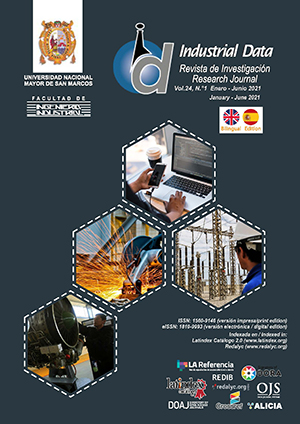Technical Efficiency of Public Universities in Peru
DOI:
https://doi.org/10.15381/idata.v24i1.19661Keywords:
university, data envelopment analysis (DEA), benchmarking, quality, experienceAbstract
Deficiencies in the quality of higher education are among Peru’s main weaknesses according to the world competitiveness ranking. Therefore, this study determined the technical efficiency (TE) of Peruvian public universities using data envelopment analysis (DEA). In addition, it analyzed the relationships between the experience and education quality of the institutions, and TE. The study covered the 42 public universities registered for 2016, which were measured in terms of one input and two outputs. It was concluded that Peruvian public universities have production functions of constant returns to scale (average OTE = 56.8 %), which served as a basis for classifying institutions into four categories according to their strategic orientations (high or low) towards research or universal education. It was also found that no relationship exists between TE and the experience or education quality of the institution.
Downloads
Published
Issue
Section
License
Copyright (c) 2021 Marco Antonio Tello Miranda, José Ovidio Flores Gutiérrez

This work is licensed under a Creative Commons Attribution 4.0 International License.
AUTHORS RETAIN THEIR RIGHTS:
a. Authors retain their trade mark rights and patent, and also on any process or procedure described in the article.
b. Authors retain their right to share, copy, distribute, perform and publicly communicate their article (eg, to place their article in an institutional repository or publish it in a book), with an acknowledgment of its initial publication in the INDUSTRIAL DATA.
c. Authors retain theirs right to make a subsequent publication of their work, to use the article or any part thereof (eg a compilation of his papers, lecture notes, thesis, or a book), always indicating the source of publication (the originator of the work, journal, volume, number and date).






